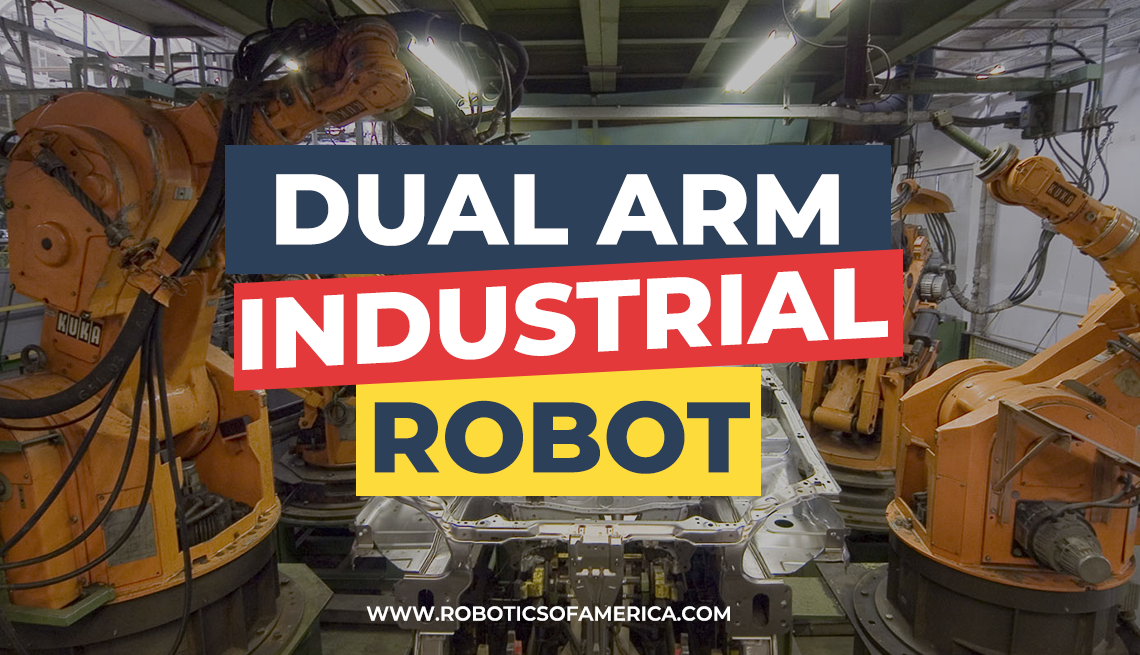
An Introduction to the Dual Arm Industrial Robot
Dual-arm industrial robots are becoming more common every year. A lot of companies are starting to realize the many benefits that these bots provide. This article explores those benefits. It also details how dual arms robots can help many organizations succeed. So, are you ready to learn about dual-arm industrial robots? If so, let’s jump right in.
What Are Dual Arm Industrial Robots?
The dual armed industrial robot helps organizations of all industries improve production processes. That’s because many companies have depended on EOAT robots in the past. EOAT refers to the end of arm tooling. These are robots that look very different from what you might imagine. They share no resemblance to robots in futuristic science fiction movies. That’s because the arm makes up the entire composition of an EOAT robot. But dual armed robots come in more shapes and sizes.
Some of them are in humanoid form. These get referred to as cobots. Cobot is an abbreviation for the collaborative robot. But there are many other types of robots that get classified as dual armed industrial robots. For example, take the SCARA robot. What does SCARA stand for?
It's an abbreviation of Selective Compliance Assembly Robot Arm. It is a small assembly robot that looks sort of like a sewing machine. Many companies are realizing something very important. It is that dual armed SCARA robots can complete material handling operations fast. After all, why buy a one-armed robot when you can buy a robot that has twice as many arms?
Dual Arm Industrial Robots Are Flexible
Most one-armed robots do not stand a chance against the dual armed industrial robot. That’s because dual-arm robots can double the output of many one-armed robots. Why? Well, there’s an extra arm that can speed up many production processes. This positions manufacturing organizations to benefit in both the short-term and long-term. In fact, many dual armed industrial robots are cost-effective. They can automate tons of different applications that humans used to specialize in. And these dual armed bots never need sick days or anything else that a human worker does.
Companies rave about how flexible dual armed robots are. That’s why more and more of them are appearing on production lines. In fact, they work best on production lines with a lot of changeovers and short product cycles. Dual-arm robots can also collaborate with humans in a very safe manner. This applies to many different forms of industrial operations.
The Key Benefits of Dual Arm Industrial Robots
There are many benefits of dual-arm industrial robots. That’s because the dual-arm system's designed for many purposes. But what is the main purpose? It is to boost the operations of many different types of organizations. In fact, one huge benefit is the flexible fixtures of these robots. They are capable of performing so many different types of mechanical tasks.
All it takes is a solid programmer to step in and reprogram a company’s dual-arm robots. Plus, most modern dual-arm industrial robots have unlimited approach angles. This means that they can maneuver themselves to reach and grasp any type of object.
The robots can also re-orient themselves so that they can re-grip objects and items. The two-hand operations allow the robot to do one of two things. It can use both hands to complete a task. Or, it can use its free hand to perform a separate operation as a simultaneous task.
Many dual-arm robots can regulate their speeds to ensure that they are not moving too fast. They are also programmed for synchronized motion. This positions the dual armed bots to handle heavy and large industrial parts. There are so many industrial applications that can involve these bots. From assembling to machine tending. Dual-arm robots can also do material removal, material handling, and dispensing/sealing.
The 4 Main Features of Dual Arm Industrial Robots
These are the four features that people love about modern dual-arm industrial robots. Let's go over each one:
-Feature #1: The modern dual-arm industrial robot has a compact design.
Decades ago, industrial robots were huge in size. But that’s not always the case anymore. The modern dual-arm robot is often very small. Many of them have two co-axial arms that do not take up much room. The robot can fit into all sorts of single-person spaces. Despite its small size, the average dual-arm robot has a large working range.
-Feature #2: The modern dual-arm industrial robot can learn.
That’s right- dual-arm industrial robots can learn new skills and abilities. How is this possible? Because there is software that allows programmers to teach their robots. You can even sync the software of a tablet to many dual-arm robots. Next, the robot can operate with a new set of techniques. This is a feature that helps make the dual-arm robot a worthwhile investment.
-Feature #3: The modern dual-arm industrial robot has flexible deployment.
What does the flexible deployment of dual-arm industrial robots mean? It refers to the robots moving to new locations. But don't expect the robots to leave work to go to a bar. Human users and operators are in control of them. Workers use a controller that connects to the wheeled base and arms of the dual-arm robot. This means that industrial workers can move around their robots with great ease.
-Feature #4: The modern dual-arm industrial robot is very safe.
Human interaction with dual-arm industrial robots has become very safe. That’s because the robots get programmed with many advanced safety features. The features ensure that safe collaboration with humans always takes place. Common safety features include a soft body, low-power motors, and deceleration functions. Collisions almost never happen, but they are always a risk for workers.
That’s why most dual-arm robots get programmed by way of collision detection software. The software will stop the robot from moving ASAP. This feature will reduce damage. But it cannot prevent damage on its own. That’s why every industrial worker should receive training on how to work with dual-arm robots.

